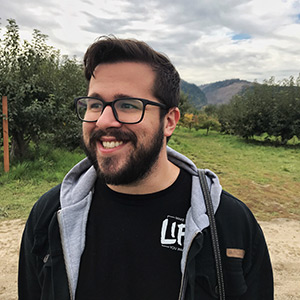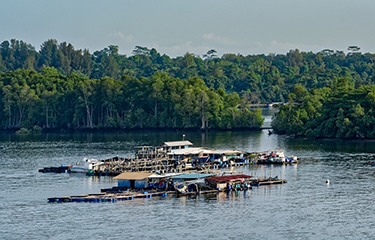Singapore has set the goal of increasing its self-sufficiency in food production from 10 percent to 30 percent by 2030 to address food security amidst climate change.
Spending on food in Asia is expected to double to USD 8 trillion (EUR 6.8 trillion) by 2030, according to Singapore-based investment company Temasek, all the while produce yields across Asia aren’t rising accordingly – and Singapore imports more than 90 percent of its food.
While there are plenty of industries being tweaked and targeted to reach the so-called “30-by-30” goal, much of it hinges on aquaculture becoming a bigger contributor to Singapore’s food system.
With at least 90 fish farms floating off Singapore’s coast, experts say the problem isn’t with production capacity, but public perception and being able to find a homegrown market to support the growing industry.
“I don’t think the problem is with production. I can produce like crazy — I just need to get the fingerlings and I can grow them in whatever space we have available. But do we have output?” asked Wong Jing Kai, managing director at Singapore fish farm Ah Hua Kelong, in a recent webinar hosted by aquaculture accelerator Hatch.
“If each farm would have 100 tons of fish available at any one point in time, Singapore’s population will not be able to sustain that – the locals are not there,” he added. “When people say [Singapore] needs to hit 30-by-30, I’m saying that without a proper marketing and directional approach, you’ll never get there.”
Ronnie Tan, a board member at California-based biotechnology firm Calysta and former vice president at Malaysia shrimp producer Blue Archipelago, said that a critical factor in the success of aquaculture in Singapore is determining the maximum amount of producers could harvest without flooding the market to the point that retailers cannot move product.
“You don't really want a situation where your fluctuating prices are up one day down the other,” he said. “Supermarkets find it very difficult to buy from you as well, because they don't like fluctuations. They want a standard price. If you can give it to them for one month, you'll be very happy. So this is the critical factor – what is the carrying capacity of the market for a particular species on a daily basis.”
In June, Friend of the Sea, a Milan, Italy-based certifier of aquaculture, fishmeal, and wild-capture fisheries that recognizes sustainable fishing and aquaculture practices, signed a memorandum of understanding with the Institution of Aquaculture Singapore to collaboratively move toward the development of environmentally-responsible aquaculture processes in Singapore.
The small panel also discussed challenges aquaculture companies are facing throughout Southeast Asia as a whole.
“The aquaculture industry in Southeast Asia is pretty fragmented,” Hatch Blue Managing Partner and Co-founder Georg Baunach said. “In the shrimp industry, you would find 80 percent of the farmers are these small operations, not real businesses, but individual farmers. I think this makes it tough to coordinate, for example, deciding to build a better brand to appeal to the Western market that this shrimp often is sold through.”
“And it also is tough for suppliers to bring in new innovation to those remote, small farms,” Baunach continued. “A lot of those farmers then individually face a lot of challenges because they don't have these economies of scale and they are reliant on the feed companies — they determine the prices.”
To learn more about Singapore’s 30-by-30 sufficiency goal, visit the Singapore Food Agency website.
A full recording of this live webinar is available on YouTube.
Photo courtesy of Igor Grochev/Shutterstock







